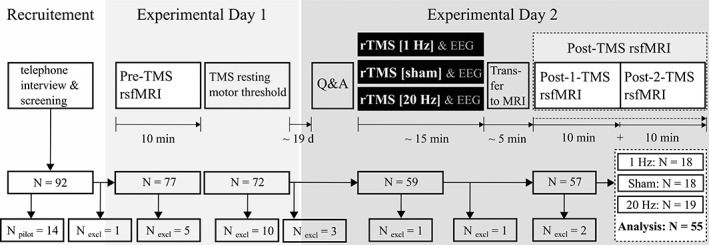Figure 1.

Study design in chronological order. On the first experimental day, participants underwent the first rsfMRI session (Pre‐TMS). Subsequently, participants' individual resting motor thresholds (RMT) were acquired. On the second experimental day and outside the MRI scanner (“offline”), the three groups of participants received one of the following stimulations to the right mFP: Low‐frequency rTMS (1 Hz, 100% RMT; N = 18), sham TMS (1 Hz, subthreshold; N = 18), high‐frequency rTMS (20 Hz, 100% RMT; N = 19). During rTMS simultaneous EEG data were acquired (see Section 2). After rTMS, participants underwent the second rsfMRI session (Post‐TMS). This session was split in half to assess an expected return‐to‐baseline effect. Furthermore, participants completed a set of mood and anxiety questionnaires (Q&A). Fifty‐five participants were included in the statistical analysis
